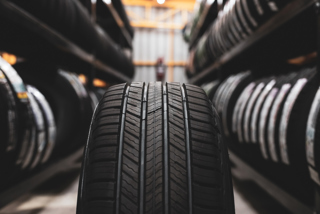By Richard Peak, director of Nextbase
The fleet industry is constantly evolving in order to keep up with new technology, whether it is designed to help fleet managers bolster their efficiency, or to fall in with new Government legislation that requires drivers everywhere to up their game in efforts to increase safety on our roads.
For as much progress is made every year, however, there is plenty that is put off in favour of waiting for the “next big thing”.
For a long time, and still now to a certain extent, that big thing was fully electric vehicles. Now it could well be the seemingly endless promise of the driverless car.
While this is part and parcel of driving as a whole, I believe that fleet managers can make an active change and take advantage of technology to make the lives of their human drivers much easier, before worrying about the potential transition to driverless fleets.
Why fleets should not play the waiting game
In December 2023, following on from the Autumn Budget, the Transport Secretary predicted the gradual roll-out of driverless vehicles by 2026.
The Government has previously announced plans with £100 million backing to further research and development of driverless vehicles in the UK, with £20 million being used in the kickstart efforts in supporting commercial self-driving services and help small businesses grow to scale.
It should not come much of a surprise that the plans announced by the Government could see further delays past 2026, and with driver-assisted technology already doing its part for drivers, fleets should be careful not rest on laurels and continue to prioritise their human drivers.
Introducing readily available measures would be the best foot forward, rather than waiting for a technology which may not only be delayed, but might not deliver quite what we expect.
Driver-friendly technology
There are, however, technological solutions that exist already that fleet managers can introduce to their business and make the lives of their drivers easier.
A new generation of smart dashcams can already utilise AI to detect, predict and help prevent accidents while helping to keep vehicles safe even when no one is around.
They also give your drivers a safety net of evidence against potential at-fault accidents and fraud - while also saving your business a lot of hassle financially when it comes to ever increasing insurance rates.
Providing on-demand GPS tracking in your fleets another road forward to make drivers feel more comfortable during their journeys – as it sets up good standards for optimising routes and keeps your business running as efficiently as it can be.
Putting your fleet driver first
It can be exciting to look forward to revolutions in technology and to embrace future innovations, but it’s also important to stay in the present, and show your drivers how valuable they are to your business.
Implement quarterly or monthly meetings or training sessions with fleet personnel, so that they can be updated with any new changes that you might have planned, and so that that personnel can voice any concerns or adjustments that can be made before they hit the road.
You can also consider specific incentives to show your appreciation for the work your drivers do.
Being transparent in your communication with personnel keeps everyone on the same page, especially with goals being set for the rest of the year, and new safety protocols that could be introduced by the Government.
As with any profession, being open and honest with your employees is paramount. As we approach the advent of real, effective driverless vehicles, there will be increasing concern around job security so it is important to assuage any fears that may impact how your fleet runs.
Adapting to the needs of the client and customer
Evolving the customer and client experience is another sure-fire way to put the people first.
With that being said smaller fleets in particular should find strategies to tailor their service. This can be done by further communicating with your drivers on route optimisation for example.
Having that understanding of how drivers can reach their customers in a timely manner can bode well for not just the fleet but for the clients and customers as well.
There of course a variety of other factors that can be considered, but in the present moment, human drivers remain at the core of any fleet business.
Streamlining all of these initiatives ensures that you don’t lose sight of short-term and long-goals, as a future of ‘driverless’ vehicles draws closer, but remains in the distance.




















Login to comment
Comments
No comments have been made yet.